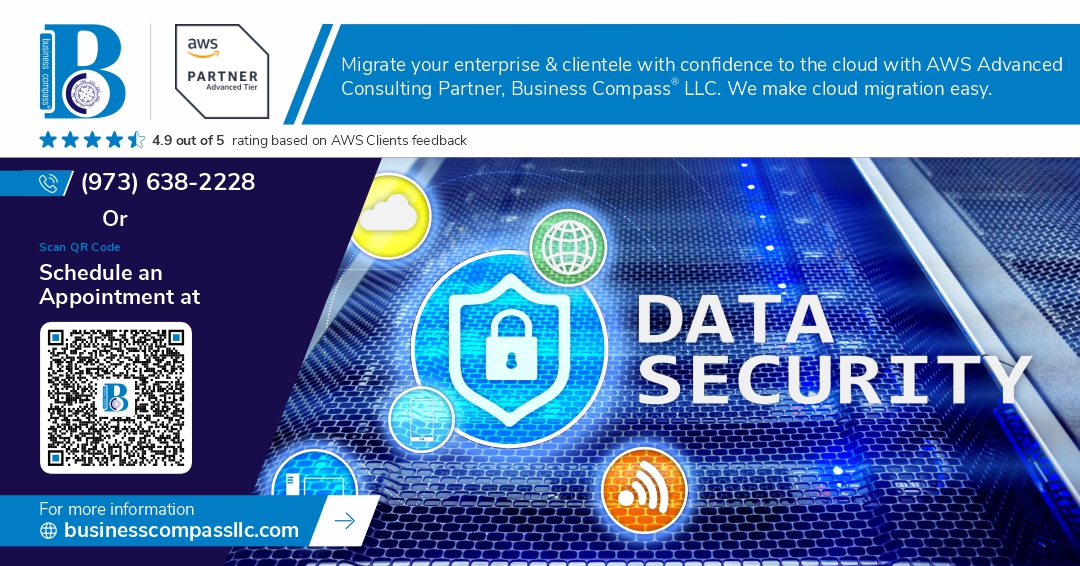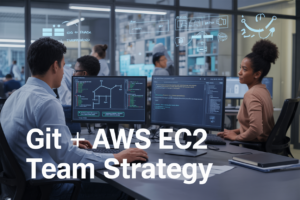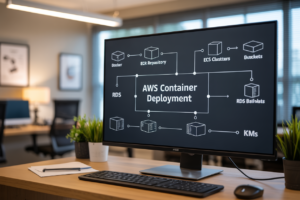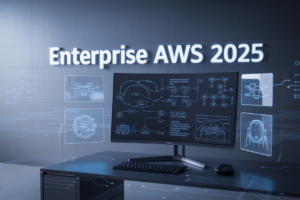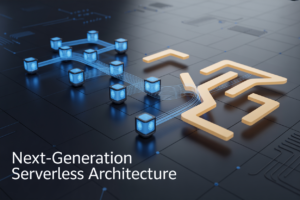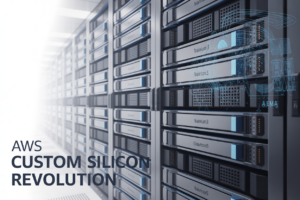🚨 Attention, AWS users! Is your cloud infrastructure under siege?
In the ever-evolving landscape of cloud computing, security threats are lurking around every corner. From EC2 instances to serverless Lambda functions, and containerized workloads in Fargate, ECS, and EKS – no compute service is immune to potential breaches. But fear not! 🛡️
Are you confident that your AWS compute services are fortified against the latest security threats? If you’ve ever wondered about the vulnerabilities in your cloud infrastructure or felt overwhelmed by the complexity of securing multiple compute services, you’re not alone. In this comprehensive guide, we’ll dive deep into the top security threats facing AWS compute services and equip you with powerful strategies to shield your digital assets. From understanding common security challenges to implementing cross-cutting security measures, we’ll cover everything you need to know to keep your cloud environment safe and secure.
Get ready to fortify your defenses as we explore the intricacies of EC2 security, uncover potential risks in Lambda functions, and reveal best practices for securing containerized workloads. We’ll also delve into enhancing EKS cluster security and provide you with a roadmap for continuous security improvement. Let’s embark on this crucial journey to safeguard your AWS compute services and ensure your cloud infrastructure remains impenetrable! 💪🔒
Understanding Common Security Threats in AWS Compute Services
A. Unauthorized access and data breaches
Unauthorized access and data breaches pose significant threats to AWS compute services. These risks can lead to devastating consequences, including data theft, financial losses, and reputational damage. To safeguard your AWS environment, consider implementing the following measures:
- Multi-factor authentication (MFA)
- Principle of least privilege
- Regular access reviews
- Strong password policies
- Encryption at rest and in transit
| Security Measure | Description | Benefit |
|---|---|---|
| MFA | Requires two or more authentication factors | Adds an extra layer of security |
| Least privilege | Grants minimal necessary permissions | Reduces potential attack surface |
| Access reviews | Regularly audit user access and permissions | Ensures up-to-date access control |
| Password policies | Enforce strong, complex passwords | Mitigates brute-force attacks |
| Encryption | Protect data at rest and in transit | Safeguards sensitive information |
B. Misconfiguration vulnerabilities
Misconfigurations in AWS compute services can create significant security gaps. Common misconfigurations include:
- Exposed storage buckets
- Overly permissive security groups
- Unpatched systems
- Inadequate logging and monitoring
To address these vulnerabilities, implement:
- Regular security audits
- Automated configuration management tools
- Continuous compliance monitoring
- Proper change management processes
C. Insider threats
Insider threats, whether malicious or accidental, can compromise AWS compute services. Mitigate these risks by:
- Implementing strict access controls
- Monitoring user activities
- Conducting regular security awareness training
- Establishing clear security policies and procedures
D. DDoS attacks
Distributed Denial of Service (DDoS) attacks can overwhelm AWS compute resources. Protect your services using:
- AWS Shield for DDoS protection
- Auto-scaling to handle traffic spikes
- Content Delivery Networks (CDNs) to distribute traffic
- Web Application Firewalls (WAF) to filter malicious requests
E. Container escape risks
Container escape vulnerabilities can compromise the isolation between containers and the host system. Mitigate these risks by:
- Using trusted container images
- Implementing strict resource limits
- Regularly updating and patching container runtimes
- Employing container-specific security tools
Now that we’ve covered the common security threats in AWS compute services, let’s dive deeper into specific challenges and solutions for EC2 instances.
EC2 Security Challenges and Solutions
Hardening EC2 instances
Hardening EC2 instances is crucial for maintaining a robust security posture. Start by using the latest, patched Amazon Machine Images (AMIs) and regularly update your instances. Implement the principle of least privilege by disabling unnecessary services and ports. Use security groups to control inbound and outbound traffic, and enable AWS Systems Manager for centralized patch management.
| Hardening Measure | Description |
|---|---|
| Updated AMIs | Use latest, patched images |
| Least Privilege | Disable unnecessary services |
| Security Groups | Control network traffic |
| Patch Management | Use AWS Systems Manager |
Implementing robust access controls
Implement strong access controls to protect your EC2 instances:
- Use AWS Identity and Access Management (IAM) roles instead of hard-coded credentials
- Enforce multi-factor authentication (MFA) for all users
- Regularly rotate SSH keys and passwords
- Implement bastion hosts for secure remote access
Securing network traffic
To secure network traffic:
- Use Virtual Private Cloud (VPC) to isolate your instances
- Implement Network Access Control Lists (NACLs) for subnet-level security
- Enable VPC Flow Logs for network traffic analysis
- Use AWS PrivateLink for secure access to AWS services
Monitoring and logging best practices
Implement comprehensive monitoring and logging:
- Enable AWS CloudTrail for API activity logging
- Use Amazon CloudWatch for performance and security monitoring
- Implement centralized log management with Amazon CloudWatch Logs
- Set up alerts for suspicious activities or threshold breaches
By implementing these security measures, you can significantly enhance the security of your EC2 instances and mitigate common threats. Next, we’ll explore how to protect Lambda functions from potential security risks.
Protecting Lambda Functions from Security Risks
Input validation and sanitization
Properly validating and sanitizing input is crucial for protecting Lambda functions from potential security risks. Here are some key practices to implement:
-
Validate input parameters:
- Check data types
- Verify value ranges
- Ensure required fields are present
-
Sanitize user-supplied data:
- Remove or escape special characters
- Encode HTML entities
- Use parameterized queries for database operations
-
Implement rate limiting:
- Set maximum request frequency
- Use AWS API Gateway to manage throttling
| Validation Technique | Description | Example |
|---|---|---|
| Schema Validation | Define expected structure and types | JSON Schema |
| Regular Expressions | Pattern matching for specific formats | Email, phone number |
| Whitelist Approach | Allow only known good input | Predefined list of options |
Managing function permissions
Properly managing Lambda function permissions is essential for maintaining a secure serverless environment. Consider the following best practices:
-
Apply the principle of least privilege:
- Grant only necessary permissions
- Use IAM roles instead of access keys
-
Regularly review and update permissions:
- Remove unused or unnecessary permissions
- Conduct periodic access audits
-
Utilize resource-based policies:
- Control which services can invoke the function
- Implement cross-account access when required
| Permission Type | Use Case | Example |
|---|---|---|
| Execution Role | Define function’s AWS service access | S3 read access |
| Resource Policy | Control function invocation | Allow API Gateway to invoke |
| VPC Access | Secure network-level access | Connect to private resources |
Now that we’ve covered input validation and permission management, let’s explore secure coding practices for Lambda functions.
Securing Containerized Workloads in Fargate and ECS
Image vulnerability scanning
Ensuring the security of containerized workloads in Fargate and ECS starts with scanning container images for vulnerabilities. This crucial step helps identify and mitigate potential security risks before they can be exploited.
- Use Amazon ECR image scanning to automatically scan images for vulnerabilities
- Implement third-party scanning tools for more comprehensive analysis
- Regularly update base images and dependencies to patch known vulnerabilities
| Scanning Method | Pros | Cons |
|---|---|---|
| Amazon ECR scanning | Integrated, easy to use | Limited to known vulnerabilities |
| Third-party tools | More comprehensive, customizable | Additional cost, integration effort |
Implementing least privilege access
Applying the principle of least privilege is essential for securing containerized workloads. This approach minimizes the potential impact of a security breach by limiting access rights to the bare minimum required for each task.
- Use IAM roles and policies to control access to AWS resources
- Implement fine-grained permissions for container tasks and services
- Regularly audit and review access permissions to ensure they remain appropriate
Network isolation strategies
Isolating containerized workloads helps prevent lateral movement in case of a security breach. Effective network isolation strategies for Fargate and ECS include:
- Utilizing VPCs and subnets to segment workloads
- Implementing security groups to control inbound and outbound traffic
- Using AWS PrivateLink for secure communication between services
Runtime security monitoring
Continuous monitoring of containerized workloads during runtime is crucial for detecting and responding to security threats in real-time. Implement the following measures:
- Enable AWS CloudTrail for auditing API calls and detecting suspicious activities
- Use Amazon CloudWatch for monitoring container metrics and setting up alerts
- Implement container-specific security monitoring tools for deeper visibility
Now that we’ve covered securing containerized workloads, let’s explore how to enhance EKS cluster security in the next section.
Enhancing EKS Cluster Security
Kubernetes-specific security considerations
When enhancing EKS cluster security, it’s crucial to address Kubernetes-specific vulnerabilities. Here are key considerations:
- RBAC (Role-Based Access Control)
- Network policies
- Pod security contexts
- Admission controllers
| Security Measure | Description | Benefit |
|---|---|---|
| RBAC | Defines who can access what resources | Granular access control |
| Network Policies | Controls traffic flow between pods | Isolation and segmentation |
| Pod Security Contexts | Sets security parameters for pods | Least privilege principle |
| Admission Controllers | Validates and mutates requests | Enforces security policies |
Pod security policies
Pod Security Policies (PSPs) are crucial for maintaining a secure EKS environment. They define a set of conditions that pods must meet to be accepted into the system. Key aspects include:
- Restricting privileged containers
- Controlling volume types
- Limiting host namespaces
Network policies and segmentation
Implementing network policies is essential for securing EKS clusters. They allow you to:
- Control ingress and egress traffic
- Isolate sensitive workloads
- Implement micro-segmentation
Secrets management in EKS
Proper secrets management is critical for EKS security. Consider these approaches:
- Use AWS Secrets Manager or AWS Systems Manager Parameter Store
- Implement external secrets operators
- Rotate secrets regularly
Cluster upgrades and patch management
Keeping your EKS cluster up-to-date is crucial for security. Implement a robust upgrade strategy:
- Regular version upgrades
- Automated patch management
- Testing in non-production environments
With these measures in place, you’ll significantly enhance your EKS cluster security. Next, we’ll explore cross-cutting security measures applicable to all AWS compute services.
Cross-Cutting Security Measures for AWS Compute Services
Implementing AWS Identity and Access Management (IAM)
AWS Identity and Access Management (IAM) is a crucial component for securing your compute resources. Implement the principle of least privilege by granting only necessary permissions to users and roles. Use IAM policies to control access to EC2 instances, Lambda functions, and container services.
| IAM Best Practices | Description |
|---|---|
| Use IAM roles | Assign roles to EC2 instances and containers instead of embedding credentials |
| Enable MFA | Require multi-factor authentication for all IAM users |
| Regularly audit | Review and update IAM policies and permissions periodically |
Encrypting data at rest and in transit
Protect your data by implementing encryption both at rest and in transit. Use AWS Key Management Service (KMS) to manage encryption keys for your compute resources.
- Encrypt EBS volumes for EC2 instances
- Enable encryption for Lambda environment variables
- Use TLS for all network communications
Leveraging AWS security services (GuardDuty, Security Hub)
Utilize AWS security services to enhance your overall security posture:
- AWS GuardDuty: Continuous threat detection for EC2, containers, and Lambda
- AWS Security Hub: Centralized view of security alerts and compliance status
- AWS Config: Track resource configurations and changes over time
Compliance and regulatory considerations
Ensure your AWS compute services meet relevant compliance standards and regulations. Use AWS Artifact to access compliance reports and agreements. Implement logging and monitoring solutions to maintain audit trails for regulatory requirements.
Now that we’ve covered cross-cutting security measures, let’s explore best practices for continuous security improvement in AWS compute services.
Best Practices for Continuous Security Improvement
Regular security assessments and penetration testing
To maintain a robust security posture, regular security assessments and penetration testing are crucial. These practices help identify vulnerabilities and potential attack vectors before malicious actors can exploit them.
- Conduct quarterly security assessments
- Perform annual penetration tests
- Use both automated and manual testing methods
- Engage third-party security experts for unbiased evaluations
Automated security checks and compliance validation
Implementing automated security checks and compliance validation tools ensures continuous monitoring and rapid detection of security issues.
| Tool | Purpose | Benefits |
|---|---|---|
| AWS Config | Assess resource configurations | Ensures compliance with security policies |
| Amazon GuardDuty | Detect threats and anomalies | Provides intelligent threat detection |
| AWS Security Hub | Centralized security management | Offers comprehensive view of security alerts |
Incident response planning and execution
A well-defined incident response plan is essential for minimizing the impact of security breaches and ensuring swift recovery.
- Develop a comprehensive incident response plan
- Regularly update and test the plan through simulations
- Establish clear roles and responsibilities for team members
- Implement automated alerting and notification systems
Security awareness training for development teams
Empowering development teams with security knowledge is crucial for maintaining a strong security posture across AWS compute services.
- Conduct regular security awareness training sessions
- Provide hands-on workshops on secure coding practices
- Encourage participation in security certifications
- Foster a culture of security-first thinking in development processes
By implementing these best practices, organizations can continuously improve their security posture and stay ahead of evolving threats in AWS compute environments.
Securing AWS compute services is a critical aspect of maintaining a robust cloud infrastructure. By addressing the unique security challenges of EC2, Lambda, Fargate, ECS, and EKS, organizations can significantly reduce their risk exposure and protect their valuable assets. Implementing best practices such as proper access management, encryption, network segmentation, and regular security audits forms the foundation of a comprehensive security strategy.
Remember that security is an ongoing process, not a one-time event. Continuously monitor your environment, stay informed about emerging threats, and regularly update your security measures to stay ahead of potential attackers. By prioritizing security across all aspects of your AWS compute services, you can ensure the integrity, confidentiality, and availability of your applications and data in the cloud.










